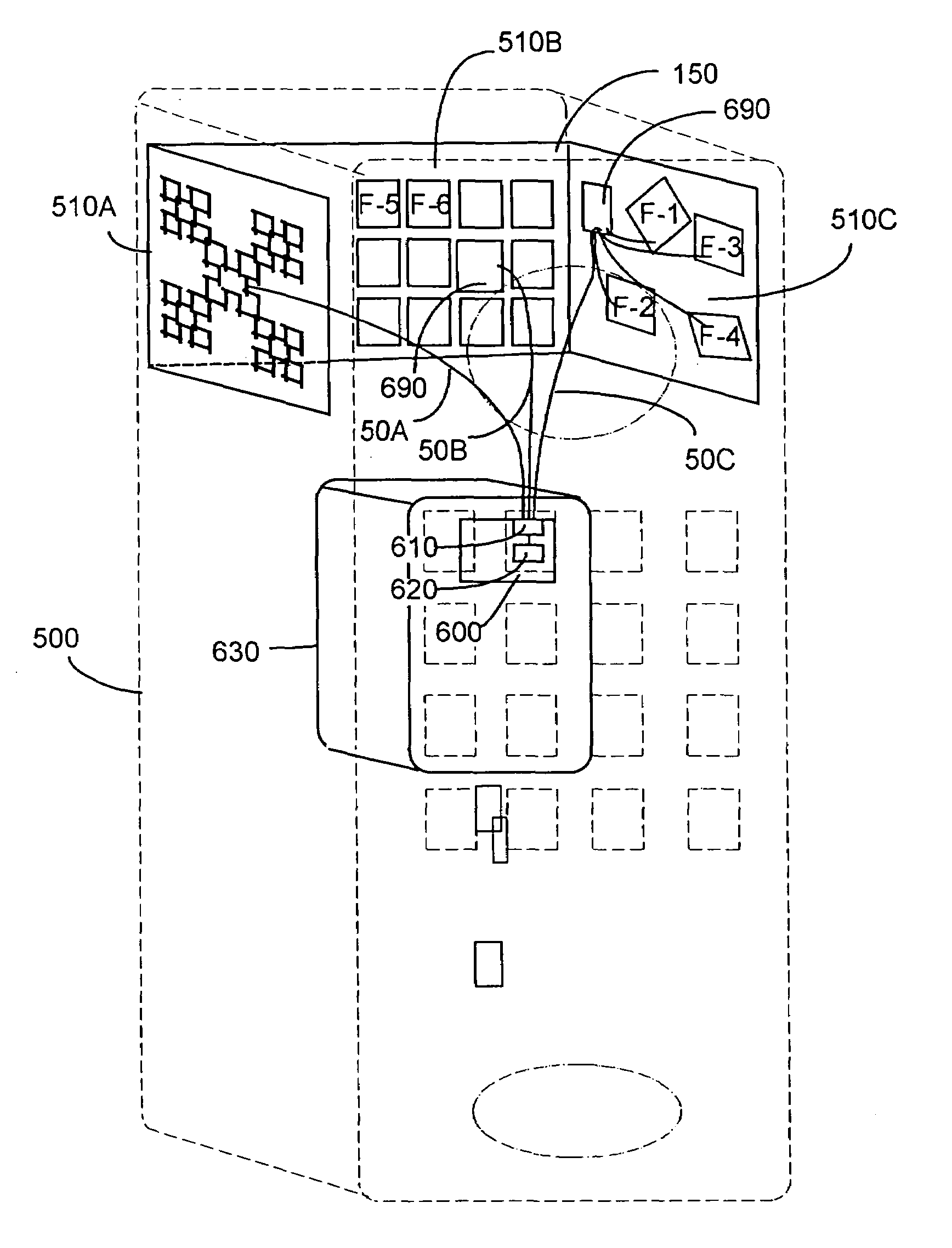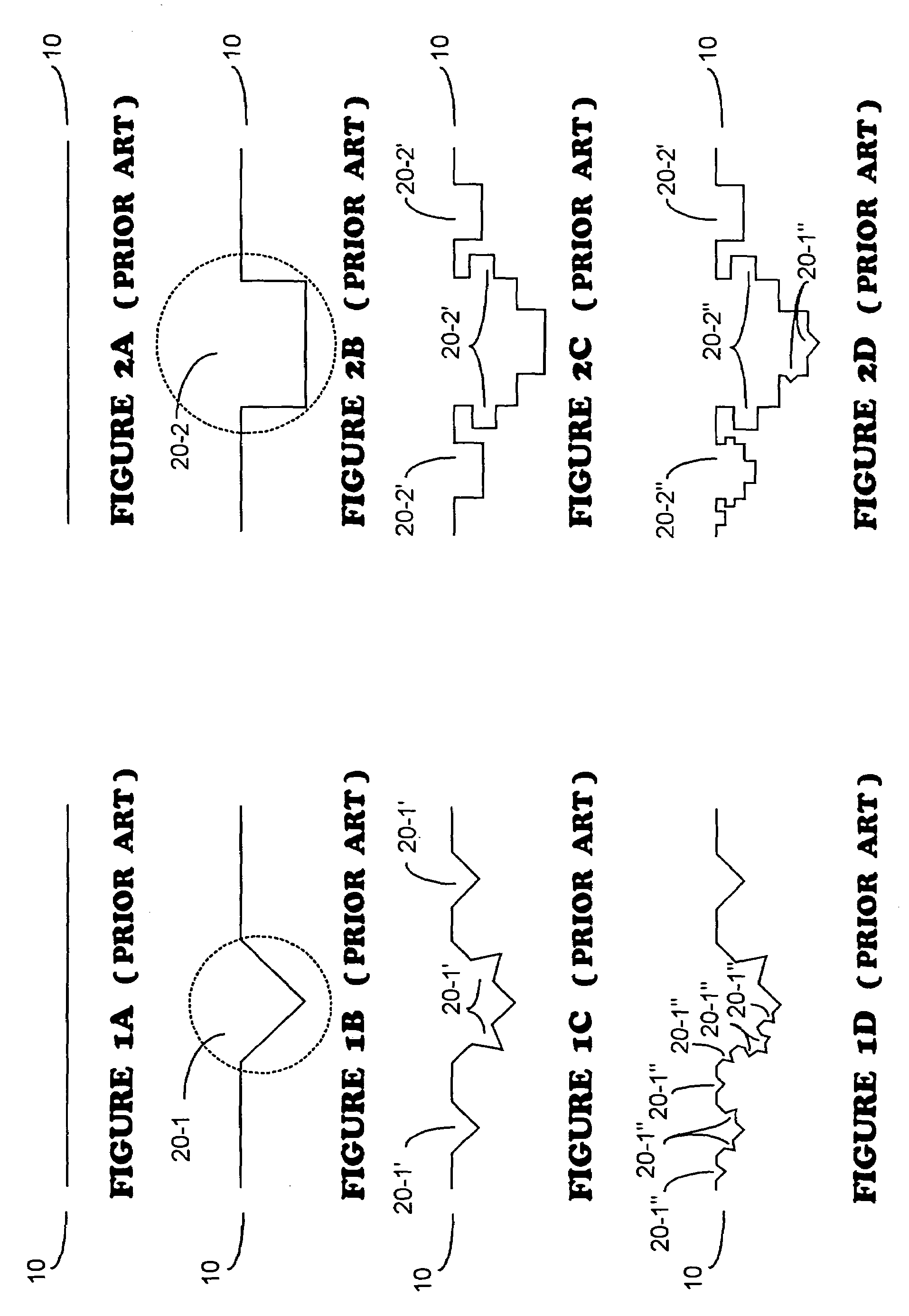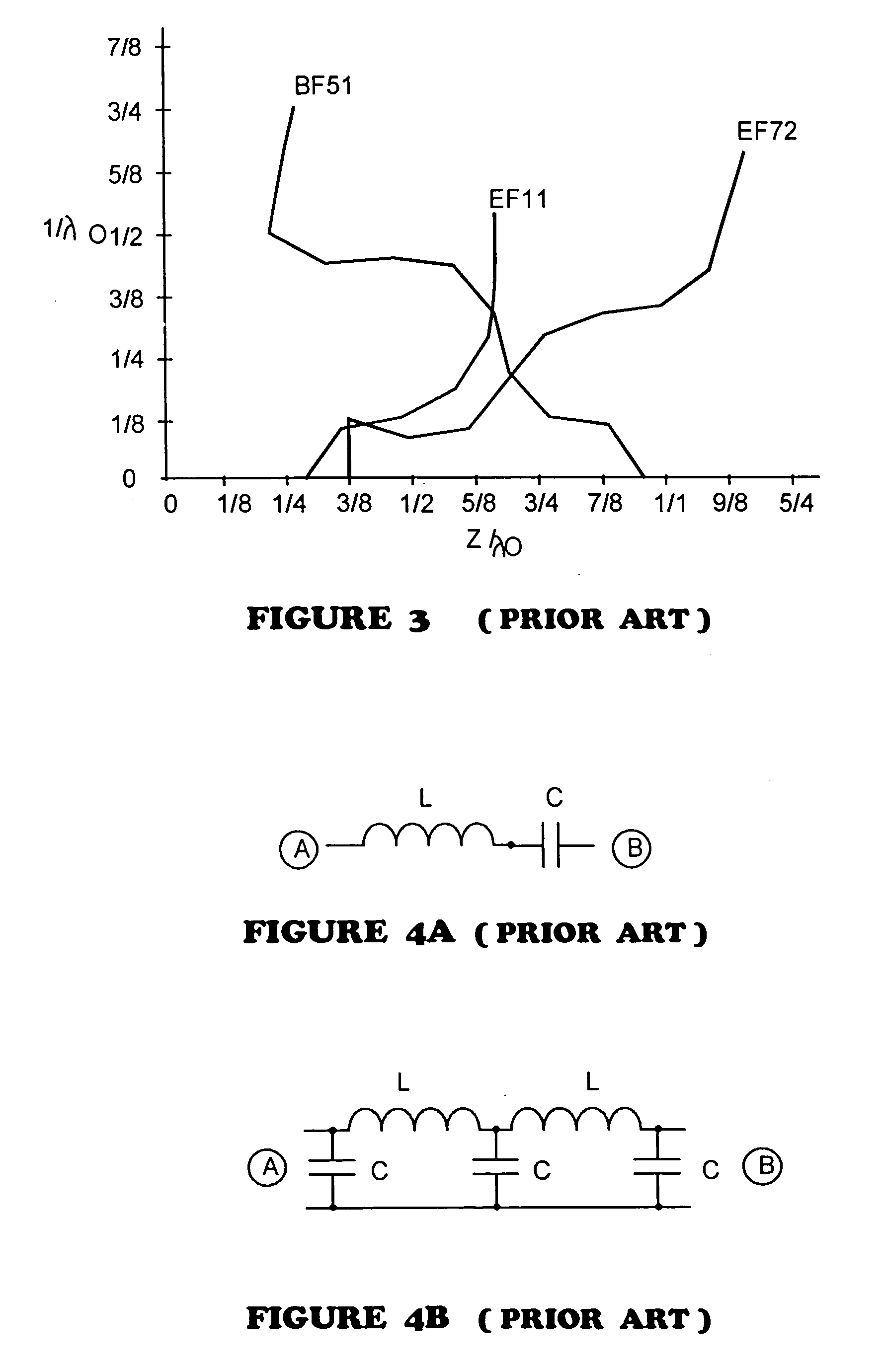Tuning fractal antennas and fractal resonators
a technology of fractal antennas and resonators, applied in the direction of non-resonant long antennas, electrically long antennas, antennas, etc., can solve the problems of large sized antennas, small sized antennas, and sharp decrease of radiation resistance (“r”), and achieve good bandwidth and acceptable standing wave ratios (swr). , the effect of high efficiency
- Summary
- Abstract
- Description
- Claims
- Application Information
AI Technical Summary
Benefits of technology
Problems solved by technology
Method used
Image
Examples
Embodiment Construction
[0084]In overview, the present invention provides an antenna having at least one element whose shape, at least is part, is substantially a fractal of iteration order N≧2. The resultant antenna is smaller than its Euclidean counterpart, provides a 50Ω termination impedance, exhibits at least as much gain and more frequencies of resonance than its Euclidean counterpart, including non-harmonically related frequencies of resonance, exhibits a low Q and resultant good bandwidth, acceptable SWR, a radiation impedance that is frequency dependent, and high efficiencies.
[0085]In contrast to Euclidean geometric antenna design, fractal antenna elements according to the present invention have a perimeter that is not directly proportional to area. For a given perimeter dimension, the enclosed area of a multi-iteration fractal area will always be at least as small as any Euclidean area.
[0086]Using fractal geometry, the antenna element has a self-similar structure resulting from the repetition of ...
PUM
 Login to View More
Login to View More Abstract
Description
Claims
Application Information
 Login to View More
Login to View More - R&D
- Intellectual Property
- Life Sciences
- Materials
- Tech Scout
- Unparalleled Data Quality
- Higher Quality Content
- 60% Fewer Hallucinations
Browse by: Latest US Patents, China's latest patents, Technical Efficacy Thesaurus, Application Domain, Technology Topic, Popular Technical Reports.
© 2025 PatSnap. All rights reserved.Legal|Privacy policy|Modern Slavery Act Transparency Statement|Sitemap|About US| Contact US: help@patsnap.com



